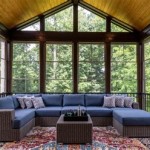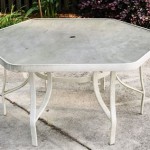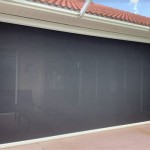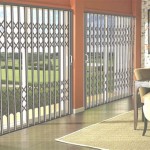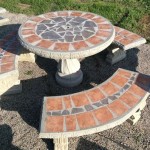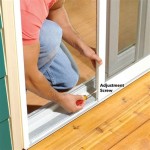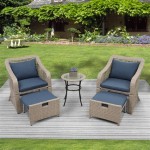Plans To Build a Wood Patio Table: A Comprehensive Guide
Building a wood patio table is a rewarding project that combines craftsmanship with functionality. A well-constructed wooden table can enhance outdoor living spaces, providing a gathering spot for meals, games, and relaxation. This article outlines key considerations and steps involved in successfully planning and executing the construction of a durable and aesthetically pleasing wood patio table.
Selecting the Right Wood for Your Patio Table
The choice of wood is paramount to the longevity and appearance of the patio table. Different wood species possess varying degrees of resistance to the elements, durability, and aesthetic appeal. Understanding these characteristics is crucial for making an informed decision.
Cedar:
Cedar is a popular choice due to its natural resistance to decay, insects, and moisture. It contains oils that act as natural preservatives, making it suitable for outdoor applications without extensive chemical treatment. Cedar is also relatively lightweight and easy to work with, though it can be softer than some other hardwoods. Its reddish-brown hue adds warmth and character.Redwood:
Similar to cedar, redwood is known for its natural resistance to rot and insects. It is a strong and stable wood with a rich, reddish-brown color. Redwood is often more expensive than cedar and can be harder to source depending on the location. Its natural beauty makes it a desirable option for high-end outdoor furniture.Teak:
Teak is a premium hardwood renowned for its exceptional durability and resistance to water damage. It contains high levels of natural oils that protect it from decay and insect infestation. Teak is commonly used in boatbuilding and high-end outdoor furniture. While teak is expensive, its longevity and minimal maintenance requirements make it a worthwhile investment. It naturally ages to a silver-gray color if left untreated.Pressure-Treated Lumber:
For budget-conscious projects, pressure-treated lumber offers an affordable and durable option. This lumber is chemically treated to resist rot and insect damage, extending its lifespan in outdoor environments. However, it's important to note that pressure-treated lumber may contain chemicals, and precautions should be taken during cutting and handling, including wearing gloves and a dust mask. It should be sealed or painted for best results.Ipe:
Ipe is a dense, exotic hardwood known for its exceptional strength and durability. It is highly resistant to decay, insects, and weathering. Ipe is often used in decking and other outdoor applications where strength and longevity are critical. However, ipe is very hard, making it more difficult to work with than other wood species. It requires specialized tools and techniques. Its dark brown color provides a sophisticated look.In addition to the wood species, the quality of the lumber is also important. Select lumber that is straight, free from knots, and properly dried. Kiln-dried lumber is generally preferred for outdoor furniture as it minimizes warping and cracking.
Designing and Planning Your Patio Table
Before commencing construction, a detailed plan is essential. The plan should include the dimensions of the table, the style, the materials needed, and the construction techniques to be employed. Careful planning will help to avoid costly mistakes and ensure a successful outcome.
Determining the Table Dimensions:
The size of the patio table should be appropriate for the intended use and the available space. Consider the number of people who will typically use the table and the size of the patio or deck. Standard patio table heights range from 28 to 30 inches. The width and length will depend on the desired seating capacity.Choosing a Table Style:
Patio tables come in various styles, ranging from simple picnic tables to more elaborate dining tables. The style should complement the overall aesthetic of the outdoor space. Common styles include: *Picnic Table:
A simple, sturdy table with attached benches, ideal for casual gatherings. *Dining Table:
A more formal table designed for outdoor dining. *Coffee Table:
A low table used for placing drinks, snacks, and other items. *Side Table:
A small table used for holding drinks or decorative items.Creating a Detailed Sketch or Blueprint:
A detailed sketch or blueprint is a visual representation of the table design, including dimensions, material thicknesses, and joint details. This allows for accurate material calculations and helps to visualize the finished product. There are numerous online resources and software tools that can assist in creating detailed plans.Calculating Material Requirements:
Once the design is finalized, calculate the amount of lumber needed for each component of the table. It is always wise to add a small percentage (e.g., 10%) to account for waste and errors. Prepare a comprehensive list of all materials, including lumber, fasteners (screws, bolts, nails), glue, and finishing products.Selecting Appropriate Fasteners:
The type of fasteners used is crucial for the strength and durability of the table. Stainless steel screws and bolts are recommended for outdoor use as they are resistant to rust and corrosion. Choose fasteners that are long enough to provide adequate holding power but not so long that they protrude through the wood.Planning for Joinery:
The type of joinery used will affect the strength and stability of the table. Common joinery techniques for patio tables include: *Butt Joints:
Simple joints where two pieces of wood are joined end-to-end or edge-to-edge. Butt joints are typically reinforced with screws or nails. *Lap Joints:
Joints where two pieces of wood overlap each other. Lap joints provide a stronger connection than butt joints. *Mortise and Tenon Joints:
A strong and traditional joinery technique where a tenon (projection) on one piece of wood is inserted into a mortise (hole) on another piece of wood. *Pocket Hole Joints:
Joints created using a specialized jig that drills angled holes for screws. Pocket hole joints are relatively easy to create and provide good strength. The pockets can be filled for a cleaner look.Construction Techniques and Finishing
The construction process involves cutting the lumber to the required dimensions, assembling the components, and applying a protective finish. Following proper techniques will ensure a stable and aesthetically pleasing table.
Cutting the Lumber to Size:
Use accurate measuring tools and a saw suitable for the type of wood being used. A miter saw is ideal for making precise crosscuts, while a table saw is useful for ripping lumber to width. Always wear safety glasses and hearing protection when operating power tools. Ensure all cuts are square and consistent for a professional finish.Assembling the Table Frame:
Begin by assembling the table frame, which typically consists of the legs, aprons (side supports), and stretchers (cross supports). Use glue and screws to secure the joints. Ensure the frame is square and level before proceeding.Attaching the Table Top:
The table top can be constructed from individual boards or a single sheet of plywood. If using individual boards, secure them to the frame with screws or nails. Ensure the boards are evenly spaced and aligned. If using plywood, reinforce the edges with solid wood edging to prevent splintering.Sanding and Smoothing:
After assembly, thoroughly sand the entire table to remove any sharp edges, splinters, and imperfections. Start with a coarse grit sandpaper (e.g., 80-grit) and gradually progress to a finer grit (e.g., 220-grit). Sand with the grain of the wood to avoid scratching.Applying a Protective Finish:
A protective finish is essential for protecting the wood from the elements and extending its lifespan. Various finishes are available, including: *Exterior Paint:
Provides a durable and waterproof finish. Choose a paint specifically formulated for outdoor use. *Exterior Stain:
Enhances the natural beauty of the wood while providing some protection from the elements. *Spar Urethane:
A clear, durable finish that protects the wood from moisture and UV damage. Requires multiple coats. *Oil-Based Sealer:
Penetrates the wood and provides a natural-looking finish. Requires periodic reapplication.Apply the finish according to the manufacturer's instructions. Ensure the wood is clean and dry before applying the finish. Apply multiple coats for maximum protection. Allow the finish to dry completely before using the table.
Adding Finishing Touches:
Consider adding finishing touches, such as decorative trim, metal accents, or an umbrella hole. These details can enhance the appearance and functionality of the table.Regular Maintenance:
Even with a protective finish, regular maintenance is necessary to ensure the longevity of the patio table. Clean the table regularly with a mild soap and water solution. Reapply the finish periodically, as needed, to maintain its protective properties. Store the table indoors during the off-season to protect it from harsh weather conditions.
How To Build A Patio Table Howtospecialist Step By Diy Plans

Diy Building Plans For A Picnic Table

Free Diy Furniture Plans To Build A Rustic Outdoor Table With Built In Drink Cooler The Design Confidential

Diy Outdoor Dining Table Restoration Hardware Dupe Thrifty Pineapple

Outdoor Dining Table Plans Houseful Of Handmade

Diy Outdoor Table Angela Marie Made

Patio Table Plans Howtospecialist How To Build Step By Diy

Free Plans To Build Your Own Outdoor Dining Table
:max_bytes(150000):strip_icc()/instrcutables-5b23f5680e23d90036196cb0.jpg?strip=all)
15 Free Picnic Table Plans In All Shapes And Sizes

25 Diy Patio Table Plans Free Wood Outdoor

